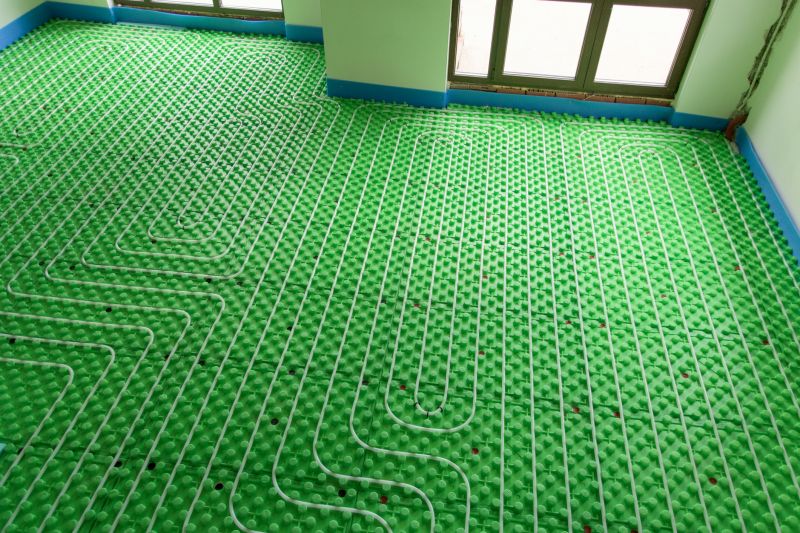Top Products For Hydronic Heater Installations You Can Trust
Explore the essential components and accessories that ensure efficient and reliable hydronic heater setups for your home or business.
 Hydronic heating systems are a popular choice for providing consistent and efficient warmth in residential and commercial spaces. These systems operate by circulating heated water through a network of pipes, radiators, or underfloor heating elements to distribute warmth evenly across a designated area. Selecting the right products for hydronic heater installations is crucial to ensure reliable performance, safety, and ease of maintenance. From boilers and pumps to thermostats and valves, a wide range of components work together to create an effective heating solution.
Hydronic heating systems are a popular choice for providing consistent and efficient warmth in residential and commercial spaces. These systems operate by circulating heated water through a network of pipes, radiators, or underfloor heating elements to distribute warmth evenly across a designated area. Selecting the right products for hydronic heater installations is crucial to ensure reliable performance, safety, and ease of maintenance. From boilers and pumps to thermostats and valves, a wide range of components work together to create an effective heating solution.
Top Overall Option
Hydronic Heating System Components Package
A comprehensive set of hydronic heating system components that includes a durable boiler, high-efficiency pump, various valves, thermostats, and safety devices. Designed to provide a reliable and integrated solution for hydronic heater installations, this package offers versatility and compatibility with different system configurations. Its modular design allows for customization and easy upgrades, making it a practical choice for a range of heating projects.
Types of Products For Hydronic Heater Installations
Hydronic Boilers
Core units that generate heat by warming water, available in various sizes and fuel types to suit different space requirements.
Circulating Pumps
Essential for moving heated water through the system, with options for variable speeds and energy efficiency.
Zone Valves
Control water flow to specific areas or zones, allowing for customized temperature regulation.
Thermostats
Temperature sensors that help maintain desired comfort levels by controlling system operation.
Air Separators
Remove air pockets from the water, preventing noise and improving system efficiency.
Expansion Tanks
Accommodate water volume changes due to temperature fluctuations, maintaining system pressure.
Pressure Relief Valves
Safety devices that release excess pressure to prevent system damage.
Flow Meters
Monitor water flow rates within the system for optimal operation.
Temperature Gauges
Provide real-time readings to help monitor system performance.
Hydronic Radiators
Emit heat into the space, available in various styles and sizes for different aesthetics and heating needs.
Underfloor Heating Mats
Install beneath flooring to provide even, comfortable warmth across large areas.
Control Panels
Centralized units for managing multiple system components and zones efficiently.
Piping and Fittings
Various connectors, elbows, and pipes designed for durable and leak-proof system assembly.
Insulation Materials
Help reduce heat loss from pipes and components, improving overall efficiency.
Drain Valves
Allow for safe system draining during maintenance or repairs.
Hydronic System Kits
Pre-packaged sets that include essential components for quick and straightforward installation.
Popular Choices
Compact and efficient boilers suitable for various installation sizes and configurations.
Energy-saving pumps designed to optimize water flow and reduce operational costs.
Wi-Fi enabled thermostats that allow remote temperature control and scheduling.
Valves that enable independent temperature management across different zones.
Automatic air release valves that help maintain system efficiency.
Tanks equipped with internal bladders to accommodate water expansion reliably.
Reliable safety devices to prevent overpressure scenarios.
Devices that provide precise measurement of water flow rates.
Complete sets for easy installation of underfloor hydronic heating systems.
Pre-configured radiator packages suitable for different room sizes.
Centralized systems for managing multiple heating zones efficiently.
Corrosion-resistant connectors designed for long-term use.
Insulation solutions to reduce heat loss and improve system efficiency.
Convenient valves for draining and bleeding air from the system.
All-in-one kits for beginners or quick system setup.
Proper installation and selection of compatible parts can help optimize energy use and ensure the longevity of the system. It is important to consider factors such as compatibility with existing infrastructure, material durability, and ease of integration when choosing products. Additionally, safety features like pressure relief valves and automatic shut-offs are essential to prevent potential hazards. Whether upgrading an existing system or installing a new one, understanding the variety of available products can aid in making informed decisions.
Hydronic heating components come in various configurations and specifications, allowing customization to meet specific heating needs. For example, different types of valves regulate water flow precisely, while various pump models ensure efficient circulation. Accessories such as expansion tanks, air separators, and zone controllers further enhance system performance. Investing in quality, reliable products can contribute to a comfortable environment and reduce long-term maintenance costs. Properly selected and installed hydronic system components can provide efficient, consistent heat tailored to the unique requirements of each space.
Key Buying Considerations
- Compatibility with existing heating infrastructure and space constraints.
- Material durability and resistance to corrosion or scaling.
- Flow rate and pressure requirements for your specific system size.
- Energy efficiency ratings of pumps and boilers to optimize operational costs.
- Availability of safety features such as pressure relief valves and automatic shut-offs.
- Ease of installation and maintenance, including access to components.
- Control options, including manual, digital, or smart thermostats.
- System capacity to meet the heating demands of the space.
- Size and configuration flexibility for future expansion or upgrades.
- Quality of fittings and piping materials to prevent leaks and ensure longevity.
- Compatibility of valves and sensors with other system components.
- Local building codes and regulations regarding hydronic heating installations.
- Warranty and support options from suppliers or manufacturers.
- Cost considerations balanced with product quality and system efficiency.
- Availability of technical support and detailed installation instructions.
